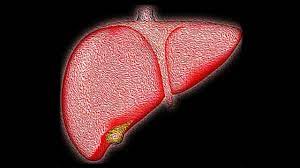Scientists have found that an increase in amino acid blood blood levels called homocysteine correlates strongly with the severity of the advanced form of non-alcoholic fatty liver disease. They also find vitamin B12 and folic acid can be used to prevent and/or delay the development of the disease. These findings can help people with non-alcoholic fatty liver disease, the term umbrella for various liver conditions that affect people who drink a little or no alcohol, which affects 25 percent of all adults globally, and four out of 10 adults in a fatty heart SingaporenonalCoholic SingaporenonalCoholic Singaporenonalcoholic disease involves a buildup of fat in the liver and is the main cause of liver transplantation throughout the world. Its high prevalence is due to its relationship with diabetes and obesity – two major public health problems in Singapore and other industrialized countries. When conditions develop into inflammation and formation of scarring, it is known as a non-alcoholic steatohepatitis (NASH). “While the deposition of fat in the liver can be reversed in the early stages, its development becomes a text causing liver dysfunction, cirrhosis and increasing the risk of liver cancer,” said Dr. Madhulika Tripathi, the first author of the study, who was a senior researcher with a hormone regulation laboratory in the Cardiovascular & Metabolic program Duke -nus. At present, there is no pharmacological treatment for texts because scientists do not understand the mechanism of this disease. Although scientists know that the text is associated with an increase in amino acid levels called homocysteine, they do not know what role, if any, which is played in the development of disorders.
Dr. Tripathi, colleague of study writer Dr. Brijesh Singh and their colleagues in Singapore, India, China and the US confirmed the Homocysteine association with the development of texts in the Praklinist and Human models. They also found that, when homocysteine levels increased in the liver, amino acids attached to various liver protein, change their structure and inhibit their functions. Specifically, when homocysteine is attached to a protein called syntax 17, it prevents protein from carrying out the role of transportation and digesting fat (known as autophagy, an important cellular process in which cells -cells eliminate defective protein or damaged organelles) in metabolism fatty acids), mitochondrial changes, and inflammatory prevention. This induces the development and development of fatty liver disease into texts.
Importantly, researchers found that completing food in the preclinical model with vitamin B12 and folic acid increases syntactic levels 17 in the liver and restoring its role in autophagy. It also slows the development of the text and inflammation of the liver and fibrosis inverse. “Our findings are interesting and important because they suggest that the therapy is relatively cheap, vitamin B12 and folic acid, can be used to prevent and/or delay the development of texts,” said Dr. Singh. “In addition, serum and hepatic homocysteine levels can function as biomarkers for the severity of text.”
Homocysteine can also affect other liver protein, and find out what is the direction of future research for the team. They hope that further research will lead to the development of anti-Nash therapy.Professor Paul M. Yen, Head of Hormone Regulation Laboratory in the Duke-Nus Cardiovascular & Metabolic Disorders Program, and senior writer of this study, said, “The potential to use vitamin B12 and folate, which has a high security profile and is appointed as a food supplement by food and Drug Administration as, as a first -line therapy for the prevention and treatment of text can cause extraordinary cost savings and reduce the health burden of texts in both developed and developing countries. “
Professor Patrick Casey, Deputy Dean of Senior for Research in Duke-Nus, said, “At present, the only treatment for patients with end-stage liver disease is to receive transplants. The findings by Dr. Tripathi and his colleagues show that the simple, intervention affordable and accessible has the potential to stop or reverse damage to the liver, bring new hope for those who suffer from fatty liver disease. The findings of the team underlined the value of basic scientific research, which through which the scientific community continues to have a major positive impact on big positive things on big things on big things on patient life. “

